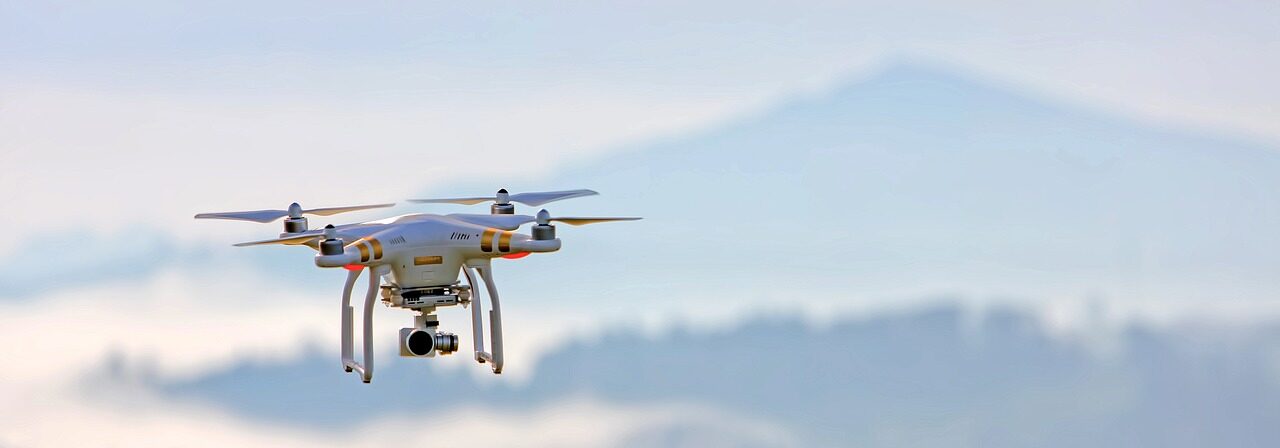Understanding Drone Cameras: Specs You Need to Know
When selecting a drone, one of the critical factors to consider is whether it has a camera and, if so, the quality of that camera. Drone cameras vary widely in terms of resolution, frame rate, and gimbal stability, and these specifications can significantly impact the quality of your aerial photography and videography.
Camera Resolution
Resolution refers to the number of pixels that make up an image. Higher resolution means more pixels, which translates to more detailed and sharper images. This is crucial for capturing high-quality photos and videos.
Common Resolutions:
-
720p (HD): Suitable for basic photography and videography, providing decent quality at an affordable price.
-
1080p (Full HD): A step up from 720p, offering clearer and more detailed images. Ideal for casual users and hobbyists.
-
2.7K: Provides even higher quality, suitable for semi-professional use. It offers a good balance between quality and file size.
-
4K (Ultra HD): Offers exceptional clarity and detail, perfect for professional photography and videography. It’s also becoming the standard for high-end consumer drones.
-
6K and 8K: The pinnacle of drone camera resolution, providing incredibly detailed images. These are typically found in professional-grade drones used for filmmaking and other high-end applications.
Choosing the Right Resolution:
-
For casual use or social media content, 1080p or 2.7K might be sufficient.
-
For professional content creation or commercial use, 4K is usually the minimum requirement.
-
For the highest quality production, such as filmmaking or large-scale commercial projects, 6K or 8K might be necessary.
Frame Rate
Frame rate, measured in frames per second (fps), refers to the number of individual frames captured per second of video. Higher frame rates result in smoother video playback, which is especially important for capturing fast-moving subjects or achieving slow-motion effects.
Common Frame Rates:
-
24 fps: Standard for cinematic videos, providing a traditional film look.
-
30 fps: Common for TV and web content, offering a smooth and natural appearance.
-
60 fps: Ideal for capturing fast action and creating slow-motion footage.
-
120 fps and higher: Used for extreme slow-motion videos, providing ultra-smooth playback.
Choosing the Right Frame Rate:
-
For standard video content, 24 fps or 30 fps is usually sufficient.
-
For sports, action scenes, or any fast-paced footage, 60 fps is recommended.
-
For slow-motion effects, 120 fps or higher is ideal.
Gimbal Stability
A gimbal is a pivoted support that allows the camera to remain steady while the drone moves. Gimbals are essential for stabilizing the camera, ensuring smooth and professional-looking footage even in windy conditions or during fast maneuvers.
Types of Gimbals:
-
2-Axis Gimbal: Stabilizes the camera on two axes (pitch and roll). It’s less expensive but provides decent stability.
-
3-Axis Gimbal: Stabilizes on all three axes (pitch, roll, and yaw), offering superior stability and smooth footage.
Benefits of Gimbals:
-
Reduced Shaking: Helps eliminate jittery footage caused by drone movement.
-
Smooth Panning and Tilting: Allows for professional-looking camera movements.
-
Consistent Horizon: Keeps the horizon level, which is crucial for maintaining the quality of aerial shots.
Choosing the Right Gimbal:
-
For casual use or basic photography, a 2-axis gimbal might suffice.
-
For professional videography or photography, a 3-axis gimbal is recommended to achieve the best results.
Additional Camera Features
Apart from resolution, frame rate, and gimbal stability, there are several other camera features to consider when choosing a drone:
-
Field of View (FOV):
-
A wider FOV captures more of the scene, which is great for landscape photography and videography.
-
Some drones offer adjustable FOV, allowing you to switch between narrow and wide angles.
-
-
Aperture:
-
The aperture controls the amount of light entering the camera. Adjustable apertures offer more control over exposure and depth of field.
-
Larger apertures (lower f-stop numbers) are better for low-light conditions.
-
-
Sensor Size:
-
Larger sensors capture more light and detail, resulting in better image quality, especially in low-light situations.
-
Common sensor sizes include 1/2.3″, 1″, and Micro Four Thirds.
-
-
Image Stabilization:
-
Some drones offer additional electronic image stabilization (EIS) to further reduce shake and jitter.
-
-
Intelligent Shooting Modes:
-
Features like panorama, time-lapse, and hyperlapse can enhance your creative possibilities.
-
ActiveTrack and Follow Me modes allow the drone to automatically track and follow subjects.
-
-
Storage Options:
-
Drones may come with internal storage or support for microSD cards. Ensure the drone supports adequate storage for your needs, especially if shooting in high resolution.
-
Practical Applications
Understanding the camera specifications of a drone is essential for matching the drone to your specific needs. Here are a few practical scenarios:
Aerial Photography:
-
High resolution (4K or higher) for detailed stills.
-
3-axis gimbal for smooth and stable shots.
-
Adjustable aperture and larger sensor size for greater control over exposure.
Videography:
-
High resolution (4K or higher) and high frame rate (60 fps or more) for smooth and detailed video.
-
3-axis gimbal for stable footage.
-
Intelligent shooting modes and image stabilization for professional-quality videos.
Recreational Use:
-
Moderate resolution (1080p or 2.7K) is usually sufficient.
-
2-axis gimbal for basic stability.
-
Good frame rate (30 fps) for smooth video playback.
Conclusion
When selecting a drone, understanding its camera specifications—resolution, frame rate, and gimbal stability—can significantly impact your aerial photography and videography experience. Higher resolution cameras provide sharper and more detailed images, while higher frame rates ensure smoother video playback. Gimbals are crucial for stabilizing the camera, especially during fast movements or in challenging conditions.
By carefully considering these specifications and matching them to your intended use, you can choose a drone that meets your needs and helps you achieve your creative or professional goals. Whether you’re a professional photographer, a filmmaker, or a hobbyist, the right drone camera can open up new perspectives and opportunities, making your investment worthwhile.

